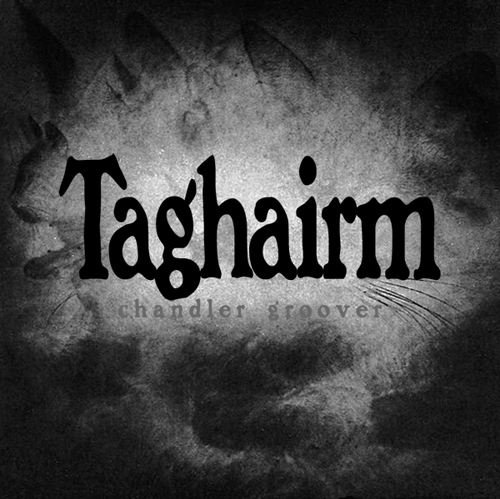
I will never forget my first Takashi Miike film.
It was Ichi The Killer, and I was young – 17 or 18, tops. I watched it with my brother, with whom I share many tastes and who introduced me to many wonderful and terrible things. I remember watching the movie, transfixed, horrified, sickened and teetering on the edge of laughter – that kind of hysterical laughter that comes bubbling out when you’ve reached your maximum capacity to cope with whatever a situation holds.
Since then, I’ve watched several of his other films – Audition, Imprint, Box and 13 Assassins. And what has continually impressed me about his storytelling is his ability to invoke true horror. He doesn’t terrify his audience; he terrorizes them. Watching a Miike film is itself somehow a traumatic experience, the sort of thing that leaves you feeling vulnerable and raw, as though you have been laid bare. I wouldn’t say that I enjoyed any of his horror films, but I don’t think “enjoyment” is the right term for what you get out of them – and they offer quite a lot: introspection, difficult questions, empathy.
In this year’s IF Comp – a competition of text-based games and interactive stories — I had the curious pleasure of playing a game that invoked this same feeling, perhaps the first time I have ever encountered the sensation in an interactive format.
The game itself is simple, and beautiful in that simplicity. The interface is a wide, black screen with a small section devoted to the white block letters of the story, which unfolds in clipped, sparse text. The writing is tight and evocative, without a wasted word, and the overall feeling is one of isolation and unease. You awaken to discover that someone – presumably your wife, or perhaps a sister – disapproves of what you’re about to do, and you do it anyway. “It,” you discover soon enough, is roasting cats alive over a fire.
At this point, it pays to back up a moment and explain the concept. Taghairm, I learned from some googling, is an ancient Scottish divination spell. It allows you to see into the future, but at a terrible cost. To complete the spell, you must roast alive a number of cats, without sleeping or eating, for several consecutive days.
There’s more to it, but I won’t get into it. If you can stomach the concept, it’s well worth it to experience it for yourself; a summary doesn’t do it justice. The combination of tight writing, anguished pacing and sound effects creates an experience that is genuinely horrifying in a way that only a text-based interactive story could be.
The game explores heady themes, such as: Is it better to know your fate? What is the price of knowledge? What is the soul worth? And, perhaps heaviest of all – when is it too late to turn back?
So to discuss these and other questions in greater detail, I reached out to chat with Taghairm creator Chandler Groover himself. Thanks, Chandler, for talking with me!
RavMon: So to get the obvious question out of the way first — what was the inspiration for Taghairm? Where’d you get the idea/how did you come across the subject in general?
CMG: Actually, the first time I came across the Taghairm spell was reading the very same quote that’s included in the game’s ending. That quote is from Katharine Briggs’s Encyclopedia of Fairies, which is a fantastic reference book. Sometimes you can read its entries as though they’re short stories. It’s got great writing, and it covers a wide breadth of European folklore, not just folklore about fairies. The fact that it has entries about Taghairm should demonstrate the variety!
After I first discovered it, I would sporadically investigate more about the ritual over the years. Taghairm can refer to two separate divination ceremonies. One involves a human medium like a sibyl who undergoes sensory deprivation to trigger prophetic visions. The other, which is the one featured in the game, involves roasting live cats. The sibyl version has a lot in common with other rituals in various cultures, but the cat version is like nothing else I know about, and it’s the one that sticks with me.
RavMon: And WHY this particular story? Why choose to write it, and why choose IF Comp as the venue for it?
CMG: I’ve wanted to write a story about Taghairm for a long time. I tried approaching it a few ways, but nothing ever seemed quite right. But presenting it as a hypertext game allowed me to arrange the material properly. I wanted to hit players with the concept the same way that it had originally hit me. Too often people turn to magic for escapist purposes, but what I consider true magic involves confronting the world directly, facing its ugliest realities. Taghairm is probably my favorite magic spell because it flays humanity to the bone and forces you to process that this is who we are. It’s what we’ve done, what we still do. It’s historical fact. That’s one reason the game doesn’t provide much breathing room with a fictional narrative. It’s focused purely on the labor that goes into the ritual.
I spent a lot of time developing the game, but I didn’t have any special reason for entering it into IF Comp. I just wanted to put it out there for a wide audience. With a game like this, you know it won’t appeal to everyone, so you really do need a wide audience to find players who might connect with it. Also, IF Comp runs mainly in October, which was a nice bonus for a horror game.
RavMon: Playing it, it actually seems like you get the best, fullest experience by playing it twice – failing the first time really puts it in context when you attempt it a second time. Was that intentional? Did it seem likely to you that most players would try to back out of the ritual?
CMG: I didn’t expect most players to complete the ritual, because it truly is asking you to do something terrible. With that in mind, I attempted to design the game so that it provides closure and context even for players who bow out early. They should still go away with enough experience to think about what the game is doing – that is, if they’re open to thinking about it. At the same time, the ending to the unfinished ritual explicitly lays down the instructions if you want to try again. But it doesn’t prompt you to try again; it doesn’t give you an option to restart; the player has to do that on their own.
RavMon: Was there an intentional meta reference about video games in the design? Like, playing it, it’s kind of impossible not to notice the grind. You’re grinding for dead cats in much the same way as you grind in an MMO. And that made me think of just how horrifying it is, if you think about it, to be doing that in World of Warcraft or whatever. Like, “Kill 50 orcs.” you go and do that without a second thought in a game because that’s how you get to the next level. It’s funny that when you add a bit of realism to that scenario, suddenly people get very uncomfortable.
CMG: Since Taghairm is a video game (well, okay, a text game, but I personally lump them together) then I think a comparison to stat-grinding in an MMO is somewhat inevitable. I do enjoy a few games that involve stat-grinding, such as Diablo and some Final Fantasy titles, but in general I tend to steer away from them. It always boils down to mathematics for me. I feel like I’m just crunching numbers. This isn’t rewarding. But other people find stat-grinding almost addictive.
In Taghairm, the design does resemble stat-grinding since you have to repeat the same process a certain amount of times to finish the ritual. But it’s not the same as crunching numbers. At every step, you’re aware that another cat needs to be killed. It’s not as though you have some meter rising from 10 to 15, and the numbers in the middle — 11, 12, 13, 14 — are merely numbers. Every number in Taghairm is a murder. And if these murders do eventually start to blend together as pure statistics for the player, that says something on its own.
The game doesn’t have graphics, and it doesn’t have terribly graphic descriptions. It’s minimalist. But people have reacted as though it’s one of the most repulsive games they’ve ever played. Not much realism was required to make that happen. Barely a drop. And that drop was already an overload.
RavMon: What kind of reception were you expecting? Were there/have there been any surprises in the way people are responding to the game?
CMG: Of course I expected negative reviews. The game involves extreme horror, and people don’t like to confront unpleasant things. There’s almost never an occasion when they do. This was a risk that the game was going to have to take no matter when or where it was released, and I hold nothing against people who choose not to play it. Its content warnings about cruelty and violence aren’t given for no reason.
What did surprise me was when people accused the game of being designed to troll the competition. I’ve been thinking about this material for years. It took me months to write the code and edit the audio. I hoped that these efforts would show and people would be able to tell that the game was made in good faith even if they personally disliked it. But some people’s gut reactions were too negative for them to look beyond their own discomfort.
RavMon: Let’s chat a bit about the horror genre. Who are your influences? What do you love about horror? What do you hate about horror?
CMG: I can trace my horror influences with surgical precision to a single book I read as a child called The Pop-Up Book of Ghost Tales. It’s exactly what it sounds like: ghost stories adapted into pop-up form. But these were great ghost stories, true horror masterpieces that I still love as an adult. Stuff like “Room 13” by M. R. James and “The Upper Berth” by F. Marion Crawford. Poe’s “Masque of the Red Death” was in there too, and Poe is such a huge influence on me that I’ll often forget I’ve even read his work. He’s built so deeply into my literary foundations that I take him for granted.
I do tend to prefer classic ghost stories over contemporary horror. I’m not too enthusiastic about people like Stephen King, but I’ve read Henry James’s The Turn of the Screw at least three times. I once read a quote (now I can’t remember who said it) about how writing a good ghost story in the classic vein is one of the hardest things an author can attempt. Because it demands such subtlety and balance.
Taghairm does owe something to my literary preferences, but I’d actually say it was inspired more by horror film. In that department my tastes run almost counter to my taste in horror books. I’m drawn to extreme, transgressive movies like A Serbian Film, Cannibal Holocaust, Begotten, Irreversible. These are all unpleasant viewing experiences. I cannot claim to enjoy them. But I feel compelled to watch them, like they’re opening windows into human nature that you have to acknowledge if you want to be honest about life.
I also really love campy and absurd horror movies. Night of the Lepus and Nobuhiko Obayashi’s Hausu are some of my favorites.
What I dislike about horror is zombies. Not all the time. On occasion they’ll work for me. But I’ve never felt especially interested in them, and right now pop culture is drowning in them. This also doesn’t seem to be a fad. My generation is genuinely attached to them as monsters. They represent problems that people have with conformity and consumerism. I just do not respond to those issues. I feel like I’ve already come to terms with them and I’m ready to move on.
RavMon: I think anyone who’s read my column knows where I stand on the zombie issue, but you’re in good company. Anyway, it’s been a pleasure, thanks for coming to chat! Before I let you go: What’s next? Any projects in production? Anywhere people can go to throw money at you?
CMG: I have two parser stories in development. One is going to be pretty short and might be suitable for sub-Q magazine, but they have specific guidelines about what they accept. I may try to submit it or I may not, depending on how it turns out, and anyway they may not want it. The other game will be longer but still on the short side, and that’s going to be a fairy tale retold from the villain’s perspective. I would rather not say too much about these games, though, in case they don’t pan out.
All my text games are listed on IFDB and playable for free: http://ifdb.tads.org/showuser?id=dciqbymh070d4kh3 My novels are available as ebooks on Amazon. Finnian’s Fiddle is fantasy (http://www.amazon.com/dp/B00K3VVCNU) and What Happened at Heath-Cliff Hall is gothic horror (http://www.amazon.com/gp/product/B00Z45EY7Q)
















One thought on “Taghairm Game Review and Interview with Creator Chandler Groover”
Comments are closed.